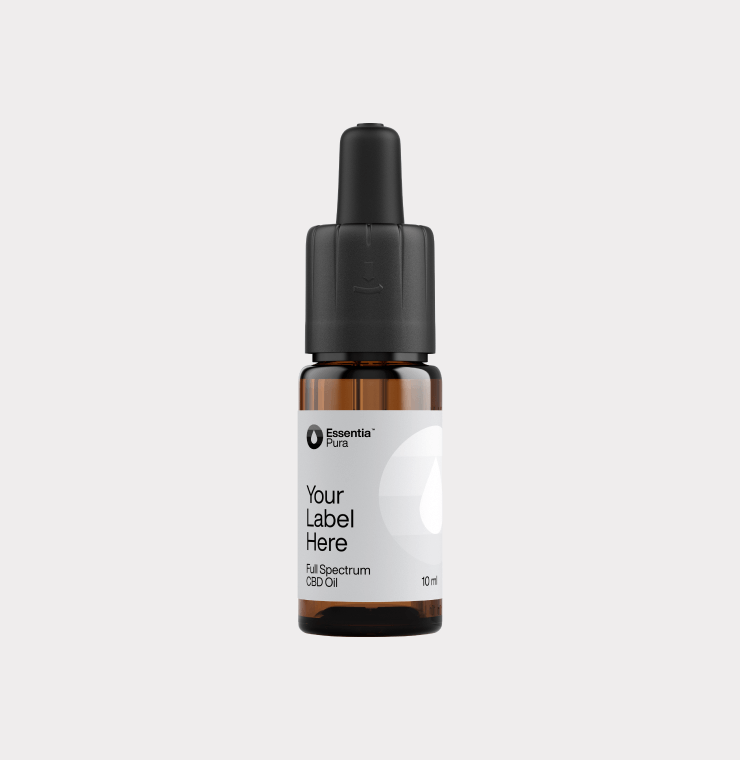Terpene Retention Through CO2 Extraction
Public interest in cannabis compounds like cannabinoids and terpenes continues to rise, as ongoing scientific research shows their therapeutic potential for a range of common neurophysiological conditions. These range from chronic inflammatory conditions like arthritis and bursitis to mood disorders like depression and insomnia. But how can consumers ensure their terpene extracts are of high quality, particularly if they aren’t especially well-educated on cannabis compounds and their benefits?
Consumers looking to buy weed-extracted terps, CBD and other cannabis isolates with a mind on quality are best served to select products processed via CO2 extraction, rather than solvent or cold pressure extraction. This post goes over different kinds of CO2 extraction, their respective advantages and disadvantages, and Essentia Pura’s CO2 extraction method and system of choice.
Extracting Terpenes with CO2
As its name suggests, CO2 terpene extraction is done using carbon dioxide as the solvent. The carbon dioxide is dried and then condensed for use in the extraction process. This process can be used to extract terpenes, cannabinoids or even flavonoids from plants, leaves, flowers, roots, and bark. This is obviously much more efficient than most other extraction techniques, where plant matter is simply decarboxylated before making oil.
As of this writing, CO2 extraction is commonly used within the food, fragrance, cannabis, sports medicine and vaping industries. It has proven to be a game-changer in the utilization of medicinal plants and their inherent beneficial properties. The next section briefly explores the differences between different CO2 extraction methods.

Processes of CO2 Extraction
There are essentially two types of CO2 extraction: wet and dry. Each of these come with different costs, ranges of equipment and advantages.
-
Wet CO2 extraction
is cheaper, but it’s generally less environmentally friendly. The machine process for wet extraction basically works like a supercharged coffee machine, pushing CO2 through plant material with enough pressure for the CO2 to dissolve everything that’s soluble into the gas. This draws and isolates cannabinoids (e.g. THC, CBD) as well as other potentially beneficial components (e.g. terpenes, flavonoids) out of everything from cannabis to herbs and spices.
Wet CO2 extraction requires lower pressure (5-16 bar) to run smoothly; excessive pressure (>16 bar) can irreversibly damage lipids in the plant cell membranes to turn them into free fatty acids. This is obviously undesirable, as it can have a negative impact on terpene structure, cannabinoid potency and the overall quality of the final product.
High Quality Co2 Extraction
Supercritical CO2 extraction is the key to obtaining the purest cannabinoids, free from solvents and toxins. Contact us, and let us process your hemp.
Click here for more
Too much pressure causes less desirable compounds to dissolve into the gas phase making it harder to remove, and giving the resulting solution a more pungent smell. On the other hand, if pressure is too low, not all desirable components may be properly extracted. Low pressure may even cause some degradation due to the lower temperature used for extraction, as higher temperature causes higher solubility.
- Wet extraction has been used for over 50 years to extract CBD from hemp plants, using a process called supercritical fluid extraction. During the 1980s, scientists discovered that exposing CBD-saturated solvent to extreme heat and pressure separated the compound into layers. This process beca me known as subcritical extraction.
-
Dry CO2 extraction
can be used for both solventless and solvent-based extractions, but the latter requires higher pressures and temperatures. Dry ice is placed in a closed container filled with product at atmospheric pressure, which causes carbon dioxide to evaporate from solid CO2 (dry ice) into gaseous CO2 (CO). The pressure difference forces liquid molecules through the plant material, extracting desirable oils and leaving behind undesirable solids such as chlorophylls, lipids, waxes and terpenoids.
The dry ice CO2 extraction method was pioneered by Dave Watson in 2007, but its use didn’t become widespread until 2010. The equipment required for this process consists of a closed system which is filled with liquid nitrogen and plant materials. Other than that, there are no special tools or equipment required.

Due to its low risk profile and cost efficiency, dry CO2 extraction is becoming more popular than wet methods for many industries, such as food processing plants where cleanliness is most important.
Do Terpenes Degrade in the Extraction Process
Compared to conventional solvent extraction, much less terpene degradation takes place in CO2 extraction. This is due to two primary factors: low process temperature, and the preservation of terpene structure due to pressurised CO2 passing through plant matter like gas, while simultaneously being able to dissolve desirable plant material like a liquid.
Private Label CBD Products
Retail-ready formulas not your type? Reach out and develop your own custom formulation.
Learn more here
Retaining Terpenes through CO2 Extraction
An added advantage of CO2 extraction that leads to increased terpene retention is the lack of a decarboxylation step in the process. The cold separation procedure further aids in protecting fragile plant compounds. For even greater terpene retention, shorter, lighter CO2 runs (i.e. subcritical extraction) can be utilised to afford maximum protection and selectivity between desirable plant components.
Finally, the use of CO2 produces the “cleanest” possible terpene extracts as of this writing, with next to no leftover residue whether from plant matter or solvents — many of which can harm the quality of the final product. This is true for the extraction of terpenes from everything from hemp to herbs and spices.

How Essentia Pura Extract Hemp Medicinal Plants & More
Essentia Pura prefers to use supercritical extraction (SCE) to extract cannabinoids from hemp and other medicinal plants, using Škrlj MoSES SCE systems. These systems are designed for bulk-scale, fully automated operations, and come with a number of advantages including:
- High selectivity, extracting maximal yields of target compounds while simultaneously filtering out undesirable components like chlorophyll.
- Utilisation of inert, non-toxic supercritical fluids for optimal extraction with no leftover residue carried over.
- Closed CO2 loop, allowing for supercritical solvent recirculation without contamination and with minimal solvent loss.
- Full software integration for efficient monitoring, management and date logging via connected computer systems.
- A low temperature process, protecting desirable extracts from degradation or wastage.
- User-friendly and high throughput system with multiple quickly opening closures.
Whether for the manufacture of cannabinoid, terpene, broad- or full-spectrum products, CO2 extractors stand as the superior choice in a burgeoning cannabis industry. Despite the high initial investment required for acquisition, the low risk profile, cost effectiveness and high selectivity of CO2 extractor machine processes make them a no-brainer for any cannabis company who can afford them.
To know more about our extraction system, send us an e-mail. For inquiries and quotes, complete our web form here.






